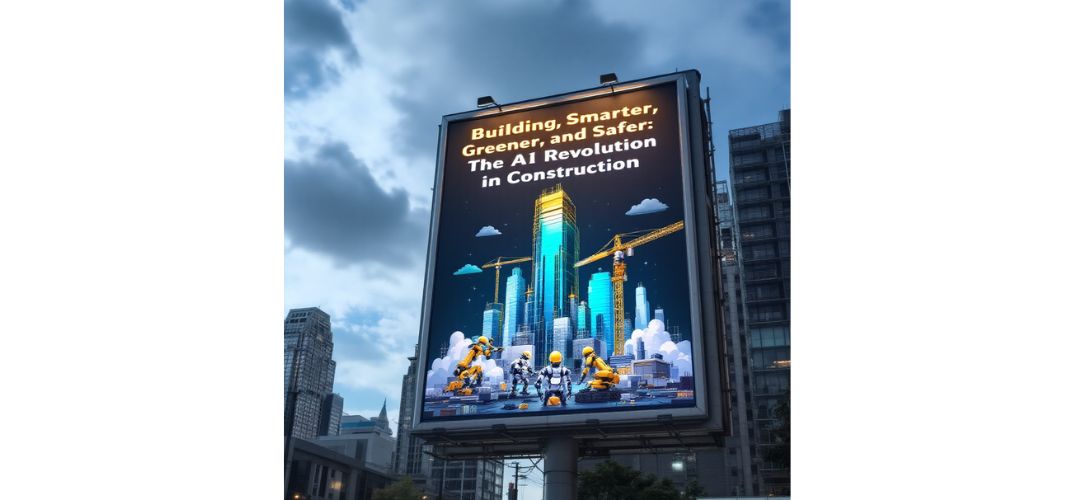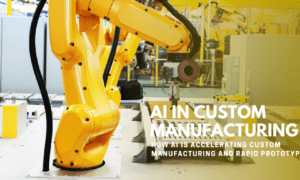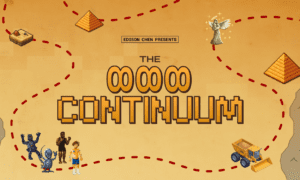By Bahir Abdul Ghani, a specialist in intelligent systems and their real-world applications. He explores how emerging technologies redefine efficiency and sustainability across industries.
A New Blueprint for the Construction Industry
The construction sector, long reliant on traditional tools and workflows, is undergoing a pivotal transformation. At the heart of this shift lies Artificial Intelligence (AI)—a force reshaping how structures are planned, budgeted, executed, and maintained. By enabling automation and intelligent decision-making, AI is ushering in a new era where data and algorithms replace instinct and guesswork, significantly elevating operational efficiency and precision.
From Guesswork to Data-Driven Cost Estimation
One of the most pressing challenges in construction has always been budgeting accurately. Traditional methods are labor-intensive and costly, often consuming up to 3% of total project costs. AI-driven predictive analytics now allow firms to analyze historical data sets to identify cost trends and estimate expenses with unprecedented accuracy. These tools digest massive data volumes—project size, materials, labor rates—and generate estimates in a fraction of the time, enabling dynamic cost planning that adjusts in real time to changes in markets or site conditions.
Real-Time Risk Management: Safety Meets Speed
Construction sites are inherently unpredictable environments. AI-powered systems are helping to mitigate these risks through early warning mechanisms and real-time surveillance. Leveraging computer vision and machine learning, these systems monitor job sites continuously, detecting unsafe behavior or potential hazards before they escalate. The integration of multiple data streams allows for an ongoing risk assessment model that is proactive rather than reactive, supporting better compliance, fewer incidents, and streamlined safety management.
Machinery That Thinks: Predictive Maintenance in Action
Unplanned equipment downtime can derail entire projects. To combat this, AI systems now monitor equipment health through sensor data analysis. By tracking parameters such as temperature, vibration, and usage frequency, predictive algorithms can alert managers to impending failures. This method not only reduces unnecessary maintenance but also extends the lifespan of expensive machinery and minimizes disruptions, ensuring smoother project timelines.
Sustainability Starts with Smarter Choices
The environmental impact of construction is a growing concern. AI is stepping in to make sustainability actionable. When selecting materials, machine learning tools analyze various environmental parameters, including embodied carbon, lifecycle cost, and thermal performance. This allows design teams to optimize both performance and sustainability simultaneously. As a result, construction becomes not just greener, but smarter—balancing ecological responsibility with structural integrity.
Smarter Energy Management for Modern Buildings
AI’s role extends beyond construction into how buildings operate. Energy efficiency is significantly enhanced through AI-enabled Building Energy Management Systems (BEMS). These systems use advanced algorithms to analyze occupancy patterns and environmental conditions, making real-time adjustments to HVAC systems. The result? Up to 30% energy savings, lower emissions, and improved occupant comfort—all automated and continuously refined by learning models.
Digital Twins: A Mirror for Real-Time Precision
Digital twins, AI-enhanced virtual replicas of physical buildings, represent a cutting-edge leap in construction technology. These models simulate the physical world in real time, tracking progress, predicting outcomes, and optimizing performance. When integrated with other AI systems, digital twins enable granular monitoring of resources and timelines, helping stakeholders simulate project scenarios and resolve issues before they occur on-site.
Collaboration Reimagined with BIM and AI
The fusion of Building Information Modeling (BIM) and AI is redefining collaboration. AI algorithms can scan BIM models to automatically detect conflicts, streamline revisions, and improve accuracy in early design stages. Enhanced visualization tools further improve stakeholder communication, making projects more transparent and efficient from planning to delivery. These innovations significantly reduce delays and misunderstandings, fostering a more collaborative and cohesive construction environment.
In conclusion, Artificial Intelligence is no longer a future aspiration for the construction industry—it is the cornerstone of its reinvention. Through data-centric innovations, AI has addressed long-standing inefficiencies while laying the foundation for a more resilient and sustainable future. From cost estimation to energy optimization, its influence spans the entire lifecycle of a building. As Bahir Abdul Ghani aptly illustrates, the future of construction is not just about building structures, but about building them smarter.



































